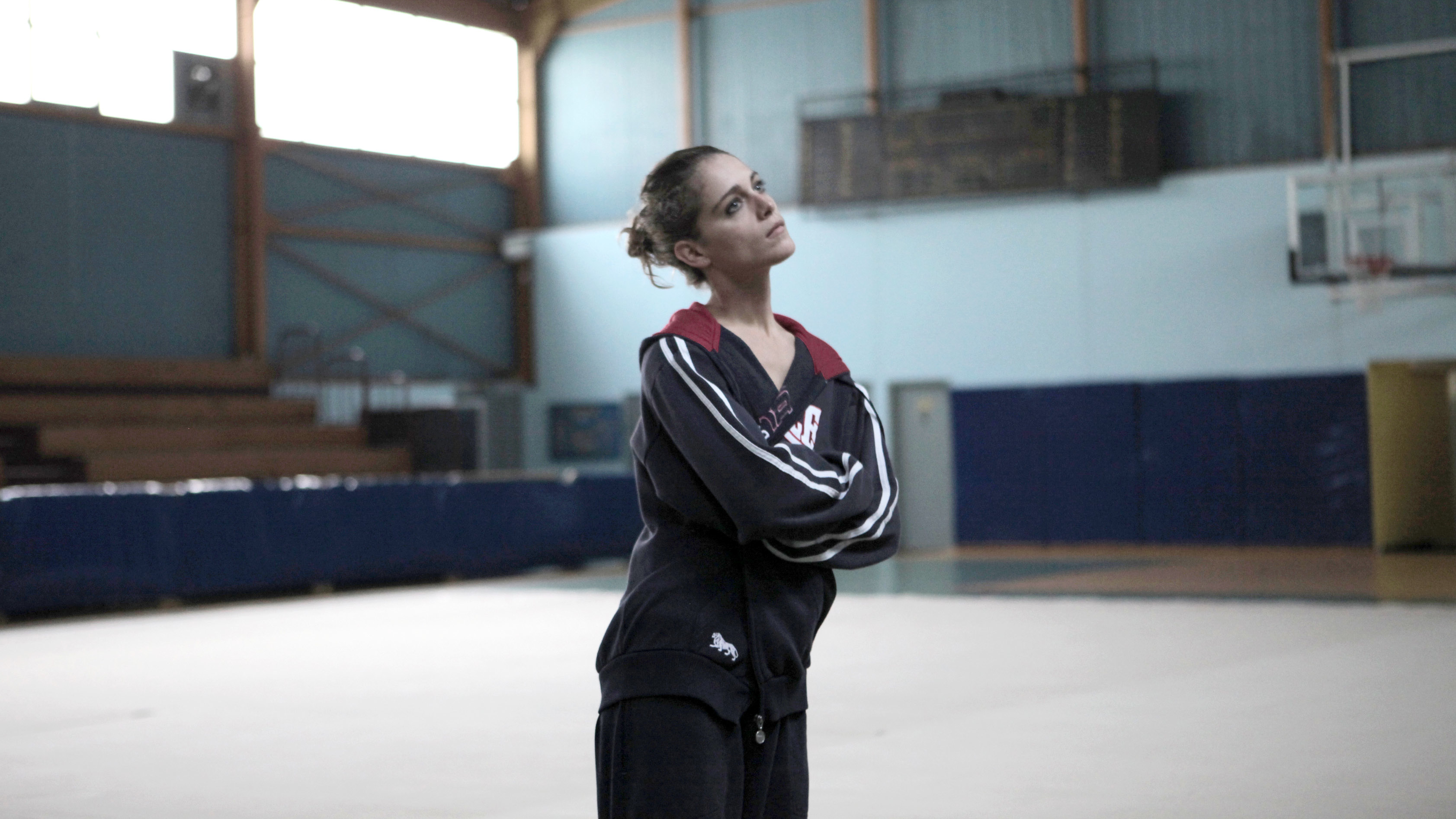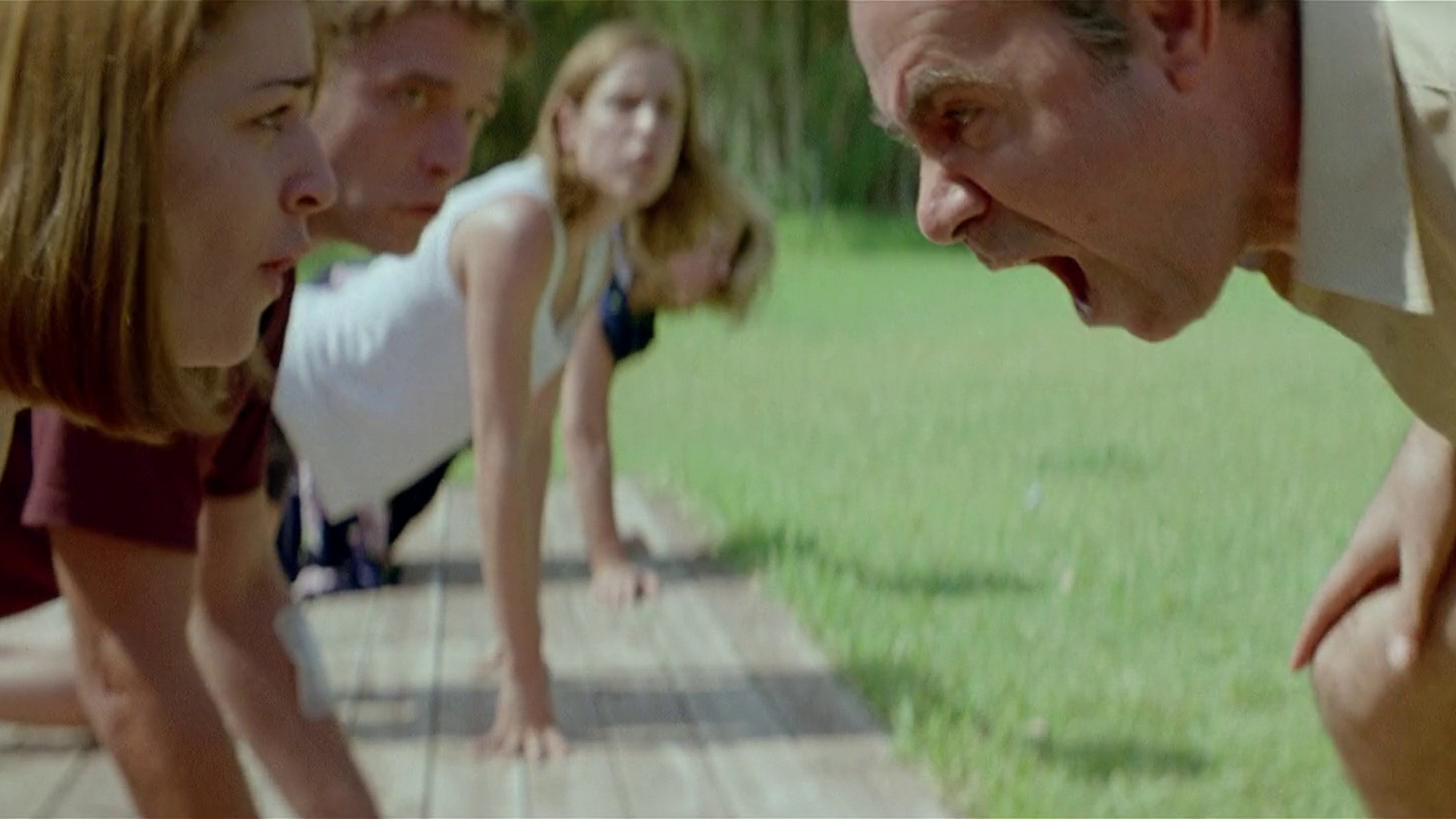Filmosophy: Being Charlie Kaufman
16 October 2017
Is Charlie Kaufman a philosopher? Many believe so. His films are increasingly screened in...
The Killing of a Sacred Deer mines similarly queasy dystopian material to Yorgos Lanthimos’ first English language film The Lobster, but this time goes for full-blown horror as the overriding tone, with far less comic relief. Watching Colin Farrell redeploy so much of the unnervingly restrained, yet matter-of-fact, acting style that he brought to his doughy and downbeat turn in The Lobster, I found myself wandering what it is that Lanthimos repeatedly includes in his films to create their overall effect, which is both alienatingly formal and devastatingly emotional. So here, dear filmgoer, is a short index of what this fan of Lanthimos’ work considers to be their four key ingredients.
ONE: PAIN Lanthimos’ work, even from as far back as his disappointing debut Kinetta is riddled with pain, and its ancillary states of suffering and numbness. Character’s frequently seem ill-equipped to cope with their interior worlds, either looking to emulate other people’s pain and suffering as a means of understanding and empathising, or, more disturbingly seeking to force others to feel their pain through the creation of a new societal paradigm, possessing its own irresistible logic (See below). Aside from the multiple instances of this that are threaded through The Lobster, you also have the ‘siblings’ in Dogtooth basically learning boundaries through sharing each other’s pain, or lack thereof. Whereas, the whole premise of Alps is pretty much acting and emulation as a means of overcoming, or losing yourself in, loss and trauma.
Lanthimos’ work, even from as far back as his disappointing debut Kinetta is riddled with pain, and its ancillary states of suffering and numbness. Character’s frequently seem ill-equipped to cope with their interior worlds, either looking to emulate other people’s pain and suffering as a means of understanding and empathising, or, more disturbingly seeking to force others to feel their pain through the creation of a new societal paradigm, possessing its own irresistible logic (See below). Aside from the multiple instances of this that are threaded through The Lobster, you also have the ‘siblings’ in Dogtooth basically learning boundaries through sharing each other’s pain, or lack thereof. Whereas, the whole premise of Alps is pretty much acting and emulation as a means of overcoming, or losing yourself in, loss and trauma.
TWO: IRRESISTIBLE LOGIC Each of Lanthimos’ films that he has worked on alongside screenwriter Efthymis Filippou, so everything since Kinetta, have been defined by the application of seemingly arbitrary rules, as if the world and existence were just a game. These rules give each film an irresistible logic, as the character’s within the film are locked into either reacting against or adhering to them. In Dogtooth the ‘parents’ have reconfigured domestic family life around a series of seemingly bizarre games and rituals that serve to mask the restrictive nature of their authoritarian world. Alps creates a world in which a professional service exists to provide surrogate simulations of deceased loved ones, so that the bereaved can process their pain and trauma – or maybe just wallow in their grief. The Lobster’s dystopian ‘reality’ is defined by the tyranny of coupling, and the weirdly programmatic science that has grown up around this, while in The Killing of a Sacred Deer retribution is given a terrifying ticking clock countdown. Filippou is clearly the driving force behind these story dynamics, as Kinetta – which he didn’t write – has no such narrative engine, but Chevalier, directed by Lanthimos’ regular producer Athina Rachel Tsangari and co-written by Filippou, depicts masculinity as a series of bizarre competitive games.
Each of Lanthimos’ films that he has worked on alongside screenwriter Efthymis Filippou, so everything since Kinetta, have been defined by the application of seemingly arbitrary rules, as if the world and existence were just a game. These rules give each film an irresistible logic, as the character’s within the film are locked into either reacting against or adhering to them. In Dogtooth the ‘parents’ have reconfigured domestic family life around a series of seemingly bizarre games and rituals that serve to mask the restrictive nature of their authoritarian world. Alps creates a world in which a professional service exists to provide surrogate simulations of deceased loved ones, so that the bereaved can process their pain and trauma – or maybe just wallow in their grief. The Lobster’s dystopian ‘reality’ is defined by the tyranny of coupling, and the weirdly programmatic science that has grown up around this, while in The Killing of a Sacred Deer retribution is given a terrifying ticking clock countdown. Filippou is clearly the driving force behind these story dynamics, as Kinetta – which he didn’t write – has no such narrative engine, but Chevalier, directed by Lanthimos’ regular producer Athina Rachel Tsangari and co-written by Filippou, depicts masculinity as a series of bizarre competitive games.
THREE: PROCEDURE Alongside the clearly defined acting style that Lanthimos’ encourages in his films, whereby lines are delivered as if they were rote learned lists of words, and little distinction is made between minor activities and major actions, procedure predominates in most other elements of the narrative. Characters are constantly finding meaning in otherwise arbitrary actions, very often forming a series from these actions, as if things need to be done in a certain ritual manner to begin to make sense. In Dogtooth this can be seen in the way the children ‘atomise’ sex, while in The Killing of a Sacred Deer the order in which food is consumed helps to forge peculiar bonds of kinship or enmity. Like so much of Lanthimos’ aesthetic, procedure serves both as a demonstration of authority and control, as well as a strangely consoling system.
Alongside the clearly defined acting style that Lanthimos’ encourages in his films, whereby lines are delivered as if they were rote learned lists of words, and little distinction is made between minor activities and major actions, procedure predominates in most other elements of the narrative. Characters are constantly finding meaning in otherwise arbitrary actions, very often forming a series from these actions, as if things need to be done in a certain ritual manner to begin to make sense. In Dogtooth this can be seen in the way the children ‘atomise’ sex, while in The Killing of a Sacred Deer the order in which food is consumed helps to forge peculiar bonds of kinship or enmity. Like so much of Lanthimos’ aesthetic, procedure serves both as a demonstration of authority and control, as well as a strangely consoling system.
FOUR: FIXED FRAMING On a technical level one of the most striking aspects of the way Lanthimos’ visualises his films is in his consistent use of fixed framing. The fixed frame is a punctuation point in Lanthimos’ work, that gives his films their jarring effect. Most commonly he deploys the fixed frame in either a wide shot, in which the entirety of an inscrutable action can be seen, or within a close-up, in which the action is atomised, but can be clearly observed. The wide shot serves to convey relationship, whereas the close-up is much more about revelation, or alienation. For example, look at how he brings out the sibling rivalry in The Killing of a Sacred Deer through wide shots of the children in their sick beds, or trying to win their parents’ sympathy. Then think about the pristine close-up of Nicole Kidman’s Anna as she realises the predicament that her husband’s actions have put their family in. The fixed frame also serves to enhance the motion of the camera, with a favoured shot of Lanthimos’ being the fixed frame establishing shot that suddenly pans to left or right, or tracks in on something, or someone, who had been just beyond the frame. I would suggest this frequently seems to point toward order being disrupted by external forces within Lanthimos’ films. In The Killing of a Sacred Deer Lanthimos also has regular cinematographer Thimios Bakatakis make the fixed frame unnervingly unstable, as what at first appears fixed, is actually revealed to be minutely correcting and reframing as it slowly tracks in toward the family home, or two characters talking. As with so many things in these films stability is frequently undermined, if not shown to be its opposite.
On a technical level one of the most striking aspects of the way Lanthimos’ visualises his films is in his consistent use of fixed framing. The fixed frame is a punctuation point in Lanthimos’ work, that gives his films their jarring effect. Most commonly he deploys the fixed frame in either a wide shot, in which the entirety of an inscrutable action can be seen, or within a close-up, in which the action is atomised, but can be clearly observed. The wide shot serves to convey relationship, whereas the close-up is much more about revelation, or alienation. For example, look at how he brings out the sibling rivalry in The Killing of a Sacred Deer through wide shots of the children in their sick beds, or trying to win their parents’ sympathy. Then think about the pristine close-up of Nicole Kidman’s Anna as she realises the predicament that her husband’s actions have put their family in. The fixed frame also serves to enhance the motion of the camera, with a favoured shot of Lanthimos’ being the fixed frame establishing shot that suddenly pans to left or right, or tracks in on something, or someone, who had been just beyond the frame. I would suggest this frequently seems to point toward order being disrupted by external forces within Lanthimos’ films. In The Killing of a Sacred Deer Lanthimos also has regular cinematographer Thimios Bakatakis make the fixed frame unnervingly unstable, as what at first appears fixed, is actually revealed to be minutely correcting and reframing as it slowly tracks in toward the family home, or two characters talking. As with so many things in these films stability is frequently undermined, if not shown to be its opposite.
The unusual intensity and atmosphere that Lanthimos’ evokes in each of his feature film collaborations with Filippou cannot be boiled down to such a meagre number of tropes. There are relationships to religious and classical allegory that also riddle Lanthimos’ work. Whereas, his ability to shoot locations in a way that seems so familiar and yet so completely anonymous, is a major source of the uncanny in his movies. One certainty about Lanthimos’ work is that it wants the audience to feel something, and to feel something as powerfully as his character’s do. What other filmmaker has been so intent on communicating pain cinematically?
Have a look at what's on to book a screening or event.
Still adding?
If you don’t want to view your Watch list right now, you can access your list anytime from your profile.